A fraternal embrace that is also a commitment
As the Church celebrates the Week of Prayer for Christian Unity, Cardinal Kurt Koch, the prefect of the Dicastery for Promoting Christian Unity, reflects on the relationship between Catholics and Orthodox 60 years after the historic encounter between Pope St. Paul VI and Ecumenical Patriarch Athenagoras
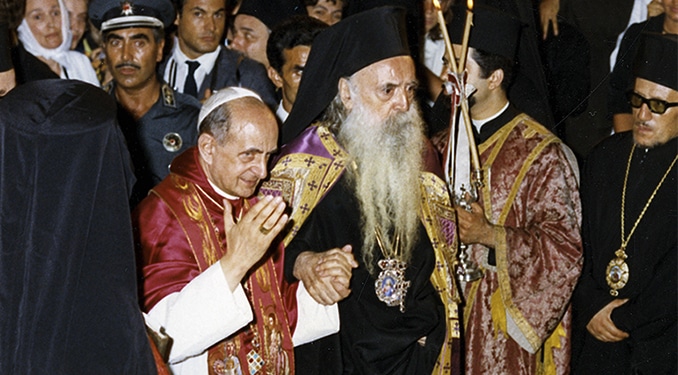
January 5 and 6 marked the 60th anniversary of the meeting in Jerusalem between Pope Paul VI and Ecumenical Patriarch Athenagoras. It was the first meeting between a pope and an ecumenical patriarch since the one between Pope Eugene IV and Patriarch Joseph II during the Council of Ferrara (1438-1439). This important anniversary is a fruitful opportunity to look, first of all, at the painful past relations between the two Churches, in the knowledge that the only way to act on the past is to purify the historical memory and to forgive. However, the goal of a gaze turned towards past events is to gratefully acknowledge what was achieved from 1964 onwards, and to permit new steps towards the future.
The return of charity, with legal force
The meeting in Jerusalem made an impact on history especially because that fraternal embrace confirmed both Churches’ willingness to restore charity between each other. This gesture is before our very eyes as a lasting icon of a willingness for reconciliation. This is why in his 2023 message to Ecumenical Patriarch Bartholomew I on the occasion of the feast of the Patron Saint Andrew, Pope Francis highlighted, that the journey toward reconciliation began “with an embrace, a gesture that eloquently expresses the mutual recognition of ecclesial fraternity”. [1]
This fraternal kiss has profound spiritual meaning. Since the agape and the fraternal kiss represent the term and rite of Eucharistic unity, the goal of the journey that began in Jerusalem has to be the re-establishment of Eucharistic communion. Indeed, when the agape is seriously experienced as an ecclesial reality, in order to be credible, it has to become a Eucharistic agape. This was the intention of the two pilgrims who met in Jerusalem. In this event, they glimpsed the dawn of a new day in which future generations would praise together the One Lord, by participating in his Eucharistic Body and Blood.
The memorable meeting in Jerusalem paved the way for the one that took place on 7 December 1965, when the leaders of the two Churches lifted their mutual excommunications of 1054. From Constantinople’s Patriarchal Church of Saint George in the Phanar and from Rome’s Saint Peter’s Basilica, they affirmed their joint willingness to remove the anathemas, the memory of which still persists, “from memory and from the midst of the Church”, so that they could no longer be a hindrance to “closer relations in charity”. In this solemn and legally binding way, the events of 1054 and their consequences were committed to historical oblivion. At the same time, it was declared that they were no longer part of the official inventory of the two Churches.
With this historical act, the poison of excommunication was removed from the Body of the Church, and the “symbol of division” was substituted with the “symbol of charity”. In the words of then-theologian Joseph Ratzinger, “the relationship of ‘cold charity’, of contrast, mistrust and antagonism’ was substituted with a relationship of charity and fraternity, symbolized by a fraternal kiss”. [3] With the repeal of the excommunication, the Church of Rome and the Church of Constantinople can go back to recognizing each other as sister Churches, an even more significant fact when we consider that the patrons of the two Churches, Saint Peter and Saint Andrew, were biological brothers.
The dialogue of charity at the service of reconciliation
These memorable events were the starting point for an ecumenical dialogue of charity which deepened in the following years through a lively exchange of visits and communication, as seen in the shared documentation that has the beautiful name “Tomos Agapis”. The dialogue of charity found visible expression especially in the good tradition of reciprocal visits between the Church of Constantinople and the Church of Rome on the occasion of their mutual Patronal feast days or other particularly important events. For a newly elected Pontiff, visiting the Ecumenical Patriarch at the Phanar in Constantinople shortly after the beginning of the pontificate has become a custom filled with meaning. And it was a beautiful sign of mature friendship when Ecumenical Patriarch Bartholomew I came to Rome for Pope Francis’ inauguration ceremony, a gesture that was even more significant because it was the first time it had occurred in the history of ecumenical relations between Rome and Constantinople.
The dialogue of charity has to continue and deepen both today and in the future, also because, throughout the course of history, different spiritualities in the East and the West have progressively distanced the Churches and largely contributed to the later rupture. Cardinal Walter Kasper summed up this process by stating concisely and incisively: “Christians did not distance themselves mainly due to their disputes and their different doctrinal formulations, but rather, they became estranged from one another because of their different way of living”. [4] This development can be explained by the fact that from the very start, the Gospel of Jesus Christ was received differently in the Christian Western and Eastern world, and it was lived and passed on according to different cultural traditions and forms. Despite these differences, the Christian world of the first millennium in the East and in the West lived as one Church. However, Christians progressively grew apart and began to understand each other ever less, to the point that, as Yves Congar eloquently highlighted, [5] we can acknowledge that this process of mutual estrangement was one of the main causes for the schism that later occurred.
In light of these historical developments, we have to ask ourselves if we can really talk about division between the East and West in the Church. The so-called “division” is usually associated with the year 1054, when Constantinople and Rome pronounced the excommunications. However, this is more of a symbolic rather than a historic date. Indeed, there was no schism, in the true sense of the word, between the Church of the East and that of the West. And there was no formal mutual condemnation in 1054 nor on any other date. Orthodox theologian Grigorius Larentzakis summed up this important fact in the following brief formulation: “No schism, and yet separated”. [6] We should thus not speak about a schism but rather, of a growing estrangement between East and West within the Church. This distance, which led to misunderstandings and controversy throughout the course of history, can only be overcome with patience, and above all, with charity, sincerely trying to meet each other halfway.
The dialogue of charity has allowed us to rediscover that fraternity between Catholics and Orthodox that Pope John Paul II considered one of the most important fruits of ecumenical engagement. [7] The dialogue of charity contributes first of all to reconciliation between the Churches, which is expressed practically in the request for forgiveness for the sins committed in the past. This request for forgiveness is particularly urgent with regards to the fourth crusade, of 1204, which, for understandable reasons, is still today an open wound for many Orthodox Christians. This crusade initially began with a positive objective. However, for political reasons, Constantinople was taken and plundered by Venetian sailors, despite the fact that Pope Innocent III had firmly banned war against Christians — a warning which is once again topical, in light of the war in Ukraine.
The dialogue of truth in the search for a common faith
Serious theological matters were also at play in the historical processes of mutual distancing. On the one hand, the dialogue of charity demands the dialogue of truth; that is, the serious theological elaboration of the theological differences that remain a source of division, with the goal of making ecclesial and Eucharistic communion possible. On the other hand, the dialogue of charity constitutes the prerequisite and the habitat in which the dialogue of truth can flourish. The two dialogues are indissolubly linked, as are charity and truth. Ecumenical dialogues lead toward the future only if they are accompanied by love for the truth of the faith and not simply by ecclesial political interests. At the deepest core of each ecumenical effort resides the recognition and more profound understanding of the apostolic faith, which is transmitted and entrusted to each new member of the Body of Christ with baptism.
The beginning of the theological dialogue of truth was announced with a joint declaration on the occasion of Pope John Paul II’s first visit to Ecumenical Patriarch Dimitrios I for the feast of Saint Andrew in Constantinople in 1979. [8] Theological dialogue can begin from the encouraging observation that the Catholic Church and the Orthodox Church have a broad shared base of faith beliefs. For this reason, ecumenical dialogue was initially able to focus on establishing a common foundation of faith. This broadly shared foundation is due to the fact that, among all the Christian Churches and ecclesial communities, Catholics and Orthodox are the closest to each other. In fact, they have retained the same ancient ecclesial structure, that is, the Church’s basic sacramental-Eucharistic and episcopal structure; in both Churches, unity in the Eucharist and episcopal ministry are seen as constitutive of being Church.
In this context, the Catholic Church, already with the Second Vatican Council, had expressed particular appreciation for the Eastern Churches, considering them part of a fundamental communion among local Churches as “sister Churches”, [9] because they provide for episcopal ministry in apostolic succession and all the valid sacraments, among them, in particular, the Eucharist, thus having all the essential ecclesial elements, that constitute them as particular Churches. And recognizing that the Eastern Churches, “although separated from us, possess true sacraments”, the Catholic Church also maintains that “some worship in common (communication in sacris), given suitable circumstances and the approval of Church authority, is not only possible but to be encouraged”. [10]
Eucharistic ecclesiology: convergences and divergences
The crucial question that must be discussed further in the ecumenical dialogue to re-establish ecclesial communion is the different understanding of the ministry of the Bishop of Rome. But even on that question, one can start from a shared foundation. In fact, Orthodoxy, too, considers the Church of the Bishop of Rome as the first place in the taxis of the various sees, as the Council of Nicaea had established. However, while Orthodoxy would recognize the Pope as “the first among equals” if unity were to be restored, the fundamental formula from the Catholic perspective goes a step further, affirming: “The Pope is the first — and he also has specific functions and tasks”. [11]
If we observe this difference up close, we realize that behind the question of the Petrine ministry hides an ecclesiological difference, given that in the ancient Church’s fundamental structure that Orthodox and Catholics have preserved, the question of the ministry of the Pope is the element which is still perceived as controversial. And yet, even and especially in the ecclesiological question, we find widely shared foundations, more precisely in the further development of a Eucharistic ecclesiology, which was primarily promoted by Russian theologians exiled in Paris after World War I and revitalized by the Catholic Church with the Second Vatican Council.
In Catholic theology, this is demonstrated by the fact that, contrary to the unilateral universalist ecclesiology that had been diffused in the past, the Council rediscovered the “Churches” — plural — once more giving value, from a theological perspective, to the local Churches, each of which is fully Church, although none makes up the totality of the Church: “This Church of Christ is truly present in all legitimate local congregations of the faithful which, united with their pastors, are themselves called churches in the New Testament”. [12] The Catholic Church thus lives in the interrelation between the plurality of the local Churches and the unity of the universal Church.
In the Catholic interpretation, the universal dimension is not at all contrary to Eucharistic ecclesiology. The Catholic Church, in fact, sees the primacy of the Bishop of Rome as neither exclusively nor primarily a juridical element nor as merely external to Eucharistic ecclesiology, but rather as a reality rooted in the Church. The unity of the Church resides deeply in the fact that she lives on the one Eucharist. Even the primacy of the Bishop of Rome must be understood relative to that network of Eucharistic communities which is the Church, as Monsignor Bruno Forte eloquently observed: “Il primato nell’eucaristia [primacy in the Eucharist]”. [13] Therefore, the mission of the Bishop of Rome, — who, according to Saint Ignatius of Antioch, has the “primacy of love” — is that of uniting in the Eucharist all the local Churches present in the world into the one universal Church. The primacy of the Bishop of Rome is a primacy of charity that looks to that unity of the Church that allows for and preserves Eucharistic communion and prevents, credibly and effectively, one altar from rising above another altar.
On the other hand, Eucharistic ecclesiology in the Orthodox world is linked to a very strong ecclesiology of the local Church. By Church, one means the community of faith that, gathered around its bishop, celebrates the Eucharist with him. This is why every Eucharistic community is fully Church. Although the horizontal unity of local churches represents fullness and beauty, ultimately it [horizontal unity] is not essential in order to be a Church. The same goes for the regional level, where, according to the principle of autonomy and autocephaly, the Churches are independent; and because they are tightly bound to their respective nations, they exist as national Churches. This is certainly their strength, because they are inculturated in the society in which believers live.
The risk that national Churches run, however, is that of being subjected, not seldom, to strong nationalist trends. Such trends are due purely to the fact that Orthodoxy — differing even from the Catholic Church — does not recognize a separation between Church and State, but rather sees a “symphony” between them. It follows then that the universal dimension of the Church slips into the background. However, if the universal dimension is not valued, it is difficult to reach a shared concept of ministry of unity even at a universal level.
Ecumenical reconciliation between synodality and primacy
From that arises the important question of how to attain greater theological convergence in the interpretation of the concept of Church among Catholics and Orthodox. Needless to say, it cannot be a compromise based on the lowest common denominator. Rather, the strong points of both ecclesial Communities must be brought into dialogue with each other. In this sense, the Saint Irenaeus Joint Orthodox-Catholic Working Group, in its final study document titled, “Serving Communion”, offered the following guideline: “Above all, the churches will need to strive for a greater balance between synodality and primacy at all levels of church life, with a strengthening of synodal structures in the Catholic Church and the acceptance in the Orthodox Church of a certain primacy within the communion of the churches at the universal level”. [14] Therefore, to continue in this direction in ecumenical dialogue, a willingness to learn is necessary from both Churches.
On the one hand, the Catholic Church must admit that she has not yet developed, in her life and ecclesial structures, that degree of synodality that would be theologically possible and necessary, and that the valuing and strengthening of synodality also constitutes an important contribution to the ecumenical recognition of the primacy of the Bishop of Rome. In this regard, Pope Francis is convinced that the theological and pastoral efforts put forth to build a synodal Church also have a powerful impact on ecumenism and that the question of the Petrine primacy, in particular, can be more adequately clarified within a synodal Church: “The Pope is not, by himself, above the Church; but within it as one of the baptized, and within the College of Bishops as a Bishop among Bishops, called at the same time — as Successor of Peter — to lead the Church of Rome which presides in charity over all the Churches”. [15]
On the other hand, we hope that the Orthodox Church is willing to rethink the principle of autocephaly in such a way that allows for a greater openness to the universal dimension of the Church and, consequently, to be able to recognize the theological need for a primate also at the universal level. In this regard, Orthodox theologian and metropolitan John D. Zizioulas especially has stressed multiple times that a ministry of unity at the universal level of the Church is in no way contrary to a Eucharistic ecclesiology but compatible with it.
The Joint International Commission for Theological Dialogue Between the Catholic Church and the Orthodox Church has also pointed to a better balance between synodality and primacy. In particular, during its Plenary Assembly in Ravenna in 2007, the Commission adopted an important document, that affirms that synodality and primacy are interdependent and that this correlation is fulfilled on every level of the Church: local, regional, and universal. The fact that Catholics and Orthodox were able to jointly declare for the first time that the Church needs a Protos, even at the universal level, represents another milestone on the ecumenical journey. At the same time, the Commission expanded and studied in depth this fundamental vision with two other documents: on Synodality and Primacy during the First Millennium (in Chieti in 2016) and on Synodality and Primacy in the Second Millennium and Today (in Alexandria in 2023).
The objective of these ecumenical efforts is to restore ecclesial communion in such a way that the Orthodox Church and the Catholic Church do not continue to live as two separate Churches, but that they live as a single Church in the East and the West, thus reflecting the unity of the Body of Christ. But being the Body of the Church tends to go beyond the self, towards the binding communion in the Eucharistic Body of the Lord, the reason for which restoring the unity of the Church would result in the reconstruction of Eucharistic communion.
Ecumenical Patriarch Athenagoras expressed this vision with incisive words in 1968: “This is the time for Christian courage. Let us love one another in order to confess our former common faith: let us make our way together before the glory of the holy common altar in order to fulfil the will of the Lord so that the church may shine, so that the world may believe and the peace of God may be with us all”. [16] Fulfilled in this vision is the deep significance of that fraternal kiss that was exchanged in Jerusalem 60 years ago and that today continues to unite Catholics and Orthodox in a common endeavour.
By Cardinal Kurt Koch – Prefect of the Dicastery for Promoting Christian Unity
___
1. Pope Francis, Message to Patriarch Bartholomew I on the Feast of Saint Andrew, 30 November 2023
2. Déclaration commune du pape Paul VI et du patriarche Athenagoras esprimant leur décision d´enlever de la mémoire et du milieu de l´Eglise les sentences d´excommunication de l´année 1054, Tomos Agapis. Vatican-Phanar (1958-1970) (Rome – Istanbul 1971), N. 127.
3. J. Cardinal Ratzinger, “Rom und die Kirchen des Ostens nach der Aufhebung der Exkommunikationen von 1054”, Ders., Theologische Prinzipienlehre. Bausteine zur Fundamentaltheologie (Munich 1982) 214-230, zit. 229.
4. Cf. W. Cardinal Kasper, Wege der Einheit. Perspektiven für die Ökumene (Freiburg i. Br. 2005) 208.
5. Cf. Y. Congar, Zerstrittene Christenheit. Wo trennten sich Ost und West (Vienna 1959).
6. G. Larentzakis, “Kein Schisma, trotzdem getrennt”, Die Tagespost, 27 June 2021.
7. John Paul II, Ut unum sint, n. 41-42.
8. The Declaration, written in Greek and French, was published in L’Osservatore Romano on 1 December 1979.
9. Cf. Unitatis redintegratio, n. 14.
10. Ibid., n. 15.
11. Benedict XVI, Light of the World: the Pope, the Church, and the signs of the times. A conversation with Peter Seewald (Vatican City, 2010).
12. Lumen gentium, n. 26.
13. B. Forte, “Il primato nell’eucaristia. Considerazioni ecumeniche intorno al ministero petrino nella Chiesa”, in Asprenas 23 (1976) 391-410.
14. Serving Communion: Re-thinking the Relationship between Primacy and Synodality: A Study by the Saint-Irenaeus Joint Orthodox-Catholic Working Group (Graz, October 2018), 17.7.
15. Pope Francis, Address at the Ceremony Commemorating the 50th anniversary of the Institution of the Synod of Bishops, 17 October 2015.
16. Télégramme du patriarche Athénagoras au pape Paul VI, à l’occasion de l’anniversaire de la levée des anathèmes le 7 décembre 1969, Tomos Agapis. Vatican-Phanar (1958-1970) (Rome — Istanbul 1971) n. 277.
Related
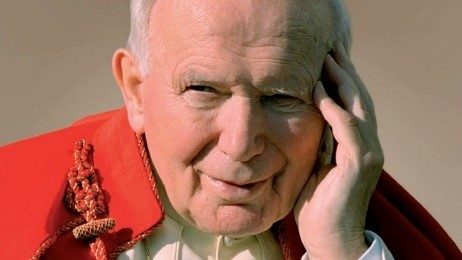
Mass in Commemoration of the 20th Anniversary of the Death of John Paul II
Exaudi Staff
01 April, 2025
1 min
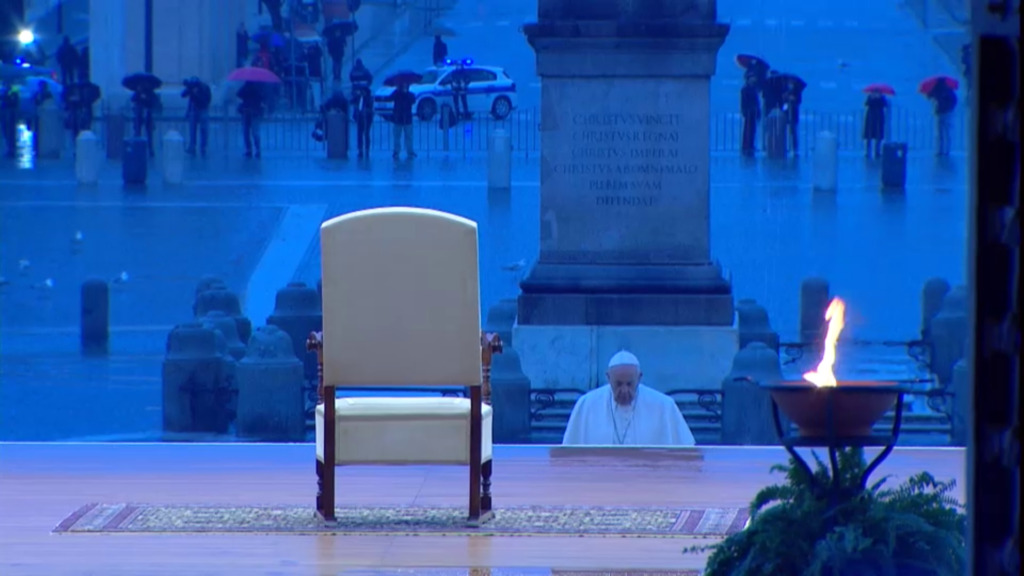
Five Years After Statio Orbis: Hope in the Midst of the Storm
Exaudi Staff
27 March, 2025
2 min
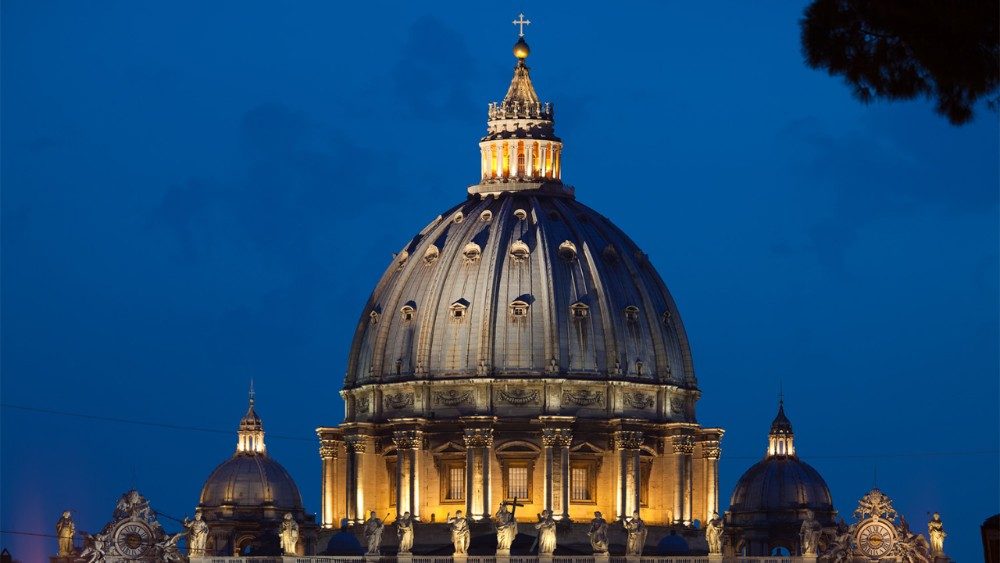
St. Peter’s Dome Will Have New Lighting for Easter
Exaudi Staff
20 March, 2025
1 min
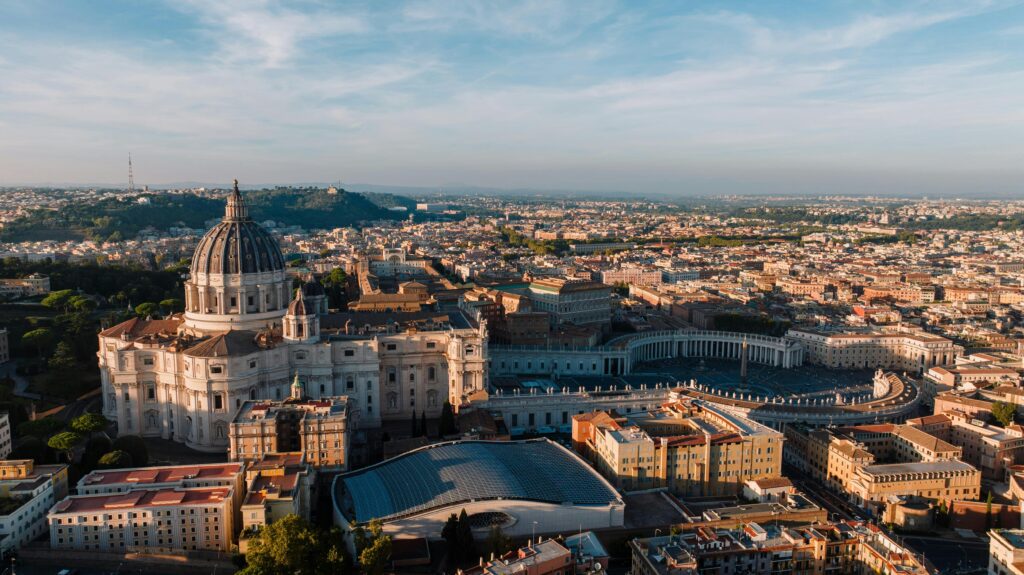
In St. Peter’s Basilica, the ancient rite of the “Statio Lenten” (Lent Station)
Exaudi Staff
17 March, 2025
2 min
 (EN)
(EN)
 (ES)
(ES)
 (IT)
(IT)

